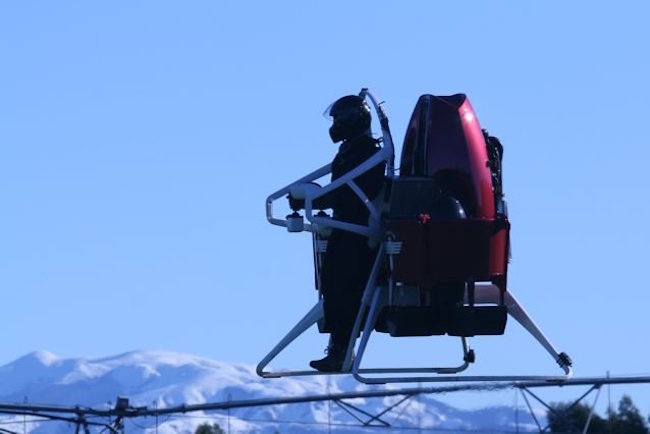Futuristic Jetpack Will Go on Sale for $200,000 Next Year

"It's a bird. It's a plane. It's a firefighter wearing a jetpack!" That could be something you find yourself saying as early as next year.
A company in New Zealand recently announced that its futuristic product — a fan-propelled, personal flying machine— will be commercially available during the second half of next year. But before you add the jetpack to your holiday wish list, check the price tag. It's expected to sell for around $200,000.
The pricey jetpack isn't just a toy for rich daredevils; it was designed with emergency first responders in mind, according to Martin Aircraft Co., which created this cool technology. [Hyperloop, Jetpacks & More: 9 Futuristic Transit Ideas]
The company sees the pack as a tool for "saving human lives," and some of the potential applications listed on its website include fire services, border patrol and search-and-rescue operations. Test flights for the Martin Jetpack began in 2013, and most recently, the pack made an appearance at the International Paris Air Show.
The pack lifts off the ground using a set of powerful fans, driven by a gasoline engine, that are attached to a carbon-fiber-and-aluminum frame. The contraption can stay in the air for about 30 minutes, and can reach speeds of 46 mph (74 km/h) and an altitude of 3,280 feet (1,000 meters), according to the Martin Aircraft Co. The metal ducts that surround the jetpack's fans are a safety feature that keeps the pilot, as well as anyone standing around the jetpack, away from the whirling fan blades.
The fan-based propulsion system is easy to control, according to the company. And the pack's fans also set it apart from rocket-based systems, such as a prototype jetpack that runs on hydrogen peroxide and nitrogen gas that was showcased at the Smithsonian "The Future Is Here" festival in 2014. In addition to the ducted fan blades, the jetpack features a parachute system that allows a pilot to ditch the contraption if something goes horribly wrong.
Someone on the ground can also control the pack remotely, and the device is designed to take off and land vertically. These features make it ideal for emergency-response tasks, such as soaring over the tops of trees to scope out a forest fire or flying to a high plateau to rescue a stranded hiker.
Get the world’s most fascinating discoveries delivered straight to your inbox.
"With its small dimensions, it can operate in confined spaces, close to and between buildings, near trees or in other areas that large or very tall aircraft, such as helicopters, can't access," Mike Read, director of flight operations at Martin Aircraft Co., said in a recent video posted to the company's YouTube channel.
Just last year, researchers at Arizona State University built a very different kind of jetpackthat could one day help soldiers move across rough terrain at record speed. Originally developed for the Defense Advanced Research Projects Agency (DARPA), the branch of the U.S. military responsible for developing new technologies, the "4-Minute Mile" jetpack is currently helping runners move at record speed. So far, the pack has helped one (already fast) runner clock a mile in just over 5 minutes.
Follow Elizabeth Palermo @techEpalermo. Follow Live Science @livescience, Facebook & Google+. Original article on Live Science.
